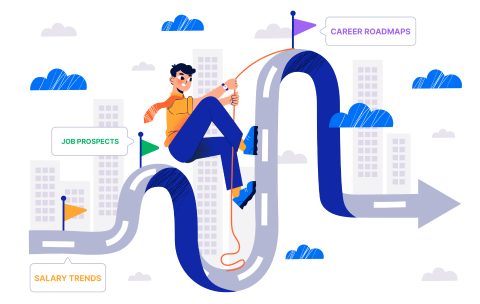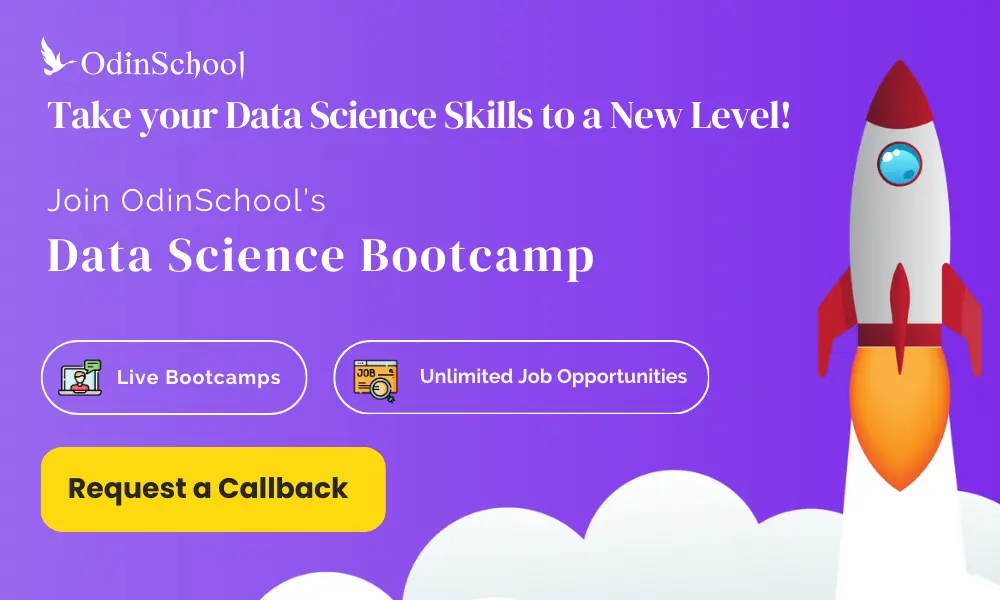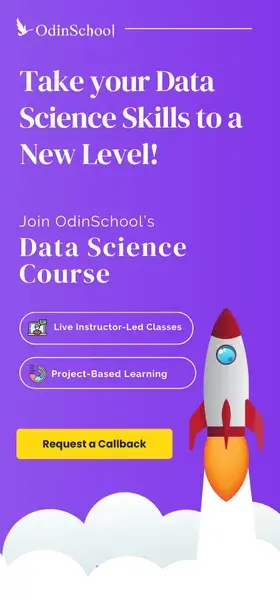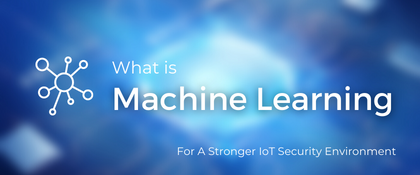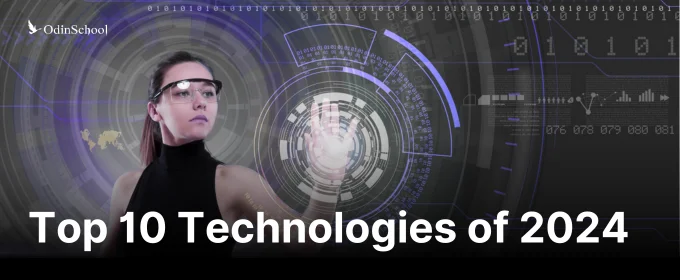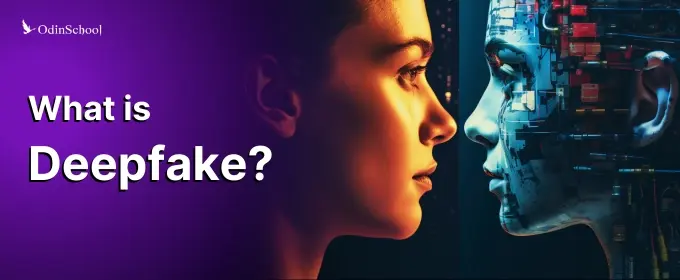Top 8 Trending Technologies in IT You Need to Know
Summary
Internet of Behaviors (IoB) for insightful marketing from IoT data, Cybersecurity Mesh with decentralized security, Total Experience integrating user, employee, and customer interactions, Hybrid Cloud's adaptable data deployment, Smart Work-from-Home Technologies catering to remote work needs, Hyper-automation optimizing processes with AI and automation, innovative Device Form Factors like foldable smartphones, and Distributed Cloud bringing cloud services closer to users for quick deployment and scalability.
Table of Content
The latest trending technologies in IT are a topic of interest for anyone remotely related to this field, given its dynamic nature. The forever evolving areas that comprise IT constantly show signs of trending technologies, with industry experts spotting and pointing them out. Global advisory companies like Gartner write reports that highlight top trending technologies that eventually change the face of IT.
As a pioneer in tech education, GreyCampus remains in pursuit of emerging as well as trending technologies in computer science to offer the best in IT knowledge to its patrons and students. Here we shortlist some of these trends and how they are on the brink of revolutionizing the world of IT.
8 Trending Technologies To Keep an Eye On
1) Internet of Behaviors (IoB)
Internet of Things (IoT) has presented analysts with a pool of information on customer behavior and preferences. The use of IoT devices is about to increase from 13.8 billion in 2021 to nearly 31 billion in 2025. Internet of Behaviors (IoB) emanates as one of the trending technologies from the opportunity that these IoT devices present. Gathering and using the data generated through IoT is the cornerstone of IoB as a concept.
IoB is the graduation of data analysis from the data collection stage to turning them into insightful and breakthrough marketing information. IoB is capable of adding a greater human element to tasks like the creation of a new product and its promotion. With IoT devices, it’s possible to map the complete customer journey from the interest in a product to its eventual purchase. This big data repository provides enormous marketing research opportunities. IoB also includes the study of consumer behavior across social media platforms, giving companies a peek into the person’s lifestyle preferences.
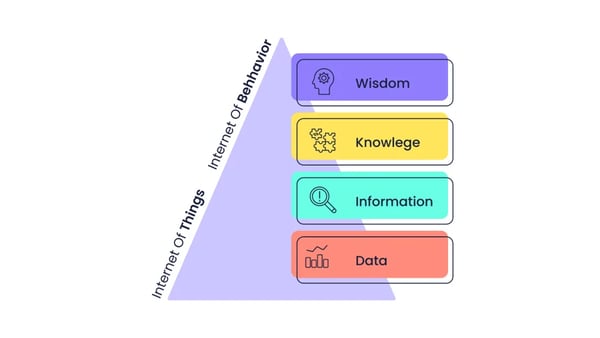
Source: GBKSOFT
When combined, IoB can study last-mile data and have a better insight into the stage of the customer journey. This will help in better ad targeting, real-time notifications, search experience optimization, and better customer satisfaction.
2) Cybersecurity Mesh
Developing a mesh to ensure cybersecurity is seen as a breakthrough innovation among IT security trending technologies. While conventional security measures involve the setting up of a perimeter around the IT network, cybersecurity mesh aims to install personalized perimeters around individual access points. This modular form of arrangement will decentralize security and bring more flexibility to the security measures.
To adopt cybersecurity mesh into a network, the traditional IT security needs a complete overhaul, since the mesh ideally integrates during the product development stage of the platform or network. The biggest advantage of cybersecurity mesh is the management of each node’s security through a centralized authority, without exposing the entire network to a security breach.
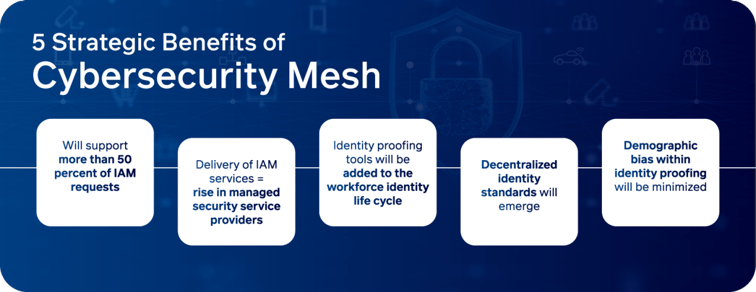
Source: Stefanini
With the rapid increase in the use of IoT devices, the number of access points has increased. This has increased the exposure to potential threats like hacking and data theft. Because of its distributed architectural model, IoB offers greater scalability in the area of IT security. Among other things, this will provide better identity and access management for enterprises.
3) Total Experience
The business’s success doesn’t depend on customer experience alone. Total experience pieces together employee experience, user experience, multi-experience and client experience to give businesses a more concise and clear business goal.
Multi-experience is the overall experience of the product or service across all platforms and devices, while user experience refers to its usability and design. Customer experience is the quality of your interaction during a customer journey. Employee experience is the quality of interaction and perception as gauged during the employee life cycle.
A fully functional total experience aims to integrate departments and processes to deliver outcome-driven projects and objectives. The use of trending technologies and tools can improve cross-functional engagement by bringing customers and employees together. This is achievable by installing processes that provide a 360-degree solution to improve the employee’s service quality and business outcome.
4) Hybrid Cloud
The hybrid cloud model will allow greater flexibility and data deployment options to applications. It seeks to use private cloud and public cloud in unison to carry out a hybrid deployment mechanism. The private cloud can be an on-site data center that is integrated with a third-party public cloud service. AWS, Microsoft, and Google are typical public cloud resources.
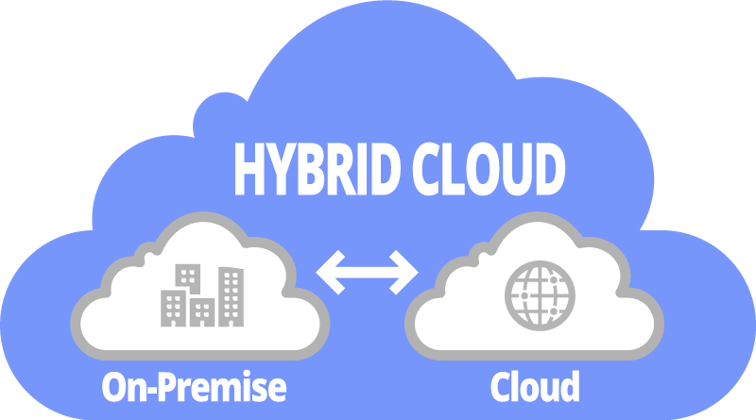
Source: CloudPlan
What makes hybrid cloud setups one of the trending technologies in computer science is their ability to remain flexible by shifting the workload between the business’s cloud infrastructure and the public cloud with ease. Elaborate private clouds may not be cost-effective, particularly for medium and small enterprises. Maintaining an operational expenditure on a public cloud is, however, easier to afford. By being integrated into a public cloud, businesses that experience demand surges can easily fall back upon public cloud infrastructures for handling the scale of operations.
Advanced hybrid cloud arrangements manage workloads in both the clouds in a component-level fragmentation. Businesses can also choose between what to keep in a public cloud and retaining sensitive portions of their data in the more closed private cloud.
5) Smart Work-from-Home Technologies
Replicating an office environment at home is not easy. This explains why even in this digital age, the traditional office environment is not completely gone. However, the COVID-19 pandemic accelerated the need for smart work-from-home technologies.
With more prominent companies offering long-term or permanent work-from-home options, innovations in work-from-home trending technologies are one area that continues to trend. With this, the need for cutting-edge tools to facilitate a safer and more productive work-from-home infrastructure also continues to grow.
Businesses continue to optimize their cloud infrastructure to ensure seamless access and connectivity outside offices. Mobile applications are coming up in a big way in the work-from-home technology segment. Feedback and communication tools are increasingly in use to maintain workforce management standards. VPNs are ensuring the safety of critical office information, while Voice over Internet Protocols are providing accessibility at an affordable cost. Meeting tools and other collaborative tech tools are other areas that continue to witness rapid advancements.
6) Hyper-automation
Hyper-automation is a natural progression of business process automation that targets individual processes. It is a concept that combines the use of automation tools like Robotic Process Automation and combines the insights of machine learning and artificial intelligence. Hyper-automation is expected to automate out-of-reach processes that are unstructured and undocumented.
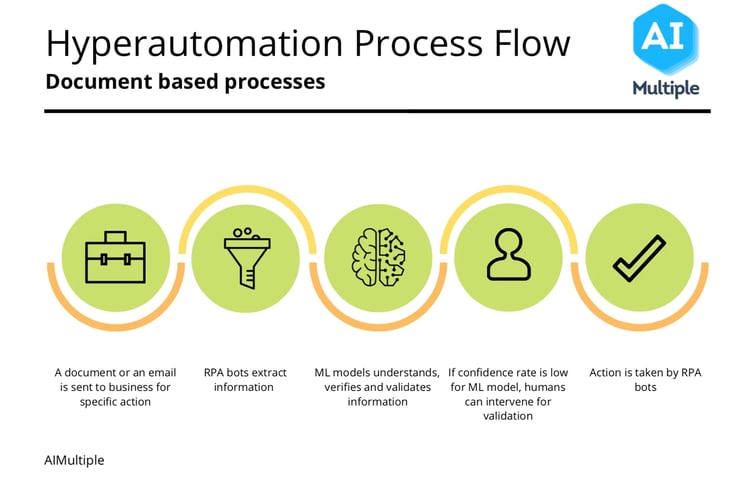
Source: AIMultiple
Automation itself is a means to improve efficiency, lower costs, and mitigate risks in processes. Hyper-automation achieves these through the use of packaged software, automation tools, and AI-enabled tools, making it prominent among trending software technologies. Unlike automation, it takes an ecosystem of platforms, networks, and aligned technologies into its fold.
The use of trending technologies means that intelligence and insights become a part of the automation process and adds sophistication to the post-automation results. The end-to-end automation provided by hyper-automation doesn’t look for processes to automate. It instead proceeds to automate everything that can be automated. By automating multiple processes, hyper-automation can add consistency and agility across processes while enhancing the use of business intelligence and lowering costs.
7) Device Form Factors
In terms of tangible innovations that customers can expect, hybrid devices may be a fertile field of innovation. The customer demand for effective and multipurpose devices drives today’s tech offerings. The pursuit of fiddling with device form factors is not something new. From laptops that are usable as tablets to adding the smart factor to watches and gadgets, dynamic trending technologies in device forms are set to continue.
Device form factors can be seen in the physical aspects of devices, in the sizes and shapes of hardware specifications of these devices. Apart from physical device specifications, trending software technologies around form factors are also apparent in each generation of RAM.
All leading smartphone makers are expected to offer foldable or roll smartphones in the coming days. Chinese smartphone brand Oppo is pushing for a continuously changing OLED technology, while Samsung has filed a patent for a rollable smartphone, which some speculate will be stretchable into a tablet. The use of in-built modem connectivity in laptops can see online use of computers similarly to smartphone connectivity. Always Connected PC is among the form-driven trending technologies anticipated in the days to come.
8) Distributed Cloud
Switching to the cloud has become more acceptable to businesses with each passing day. While we have discussed how hybrid cloud is emerging as a trend, the concept of distributed cloud is also of huge relevance for businesses. Distributed cloud brings back the relevance of location to the concept of cloud computing.
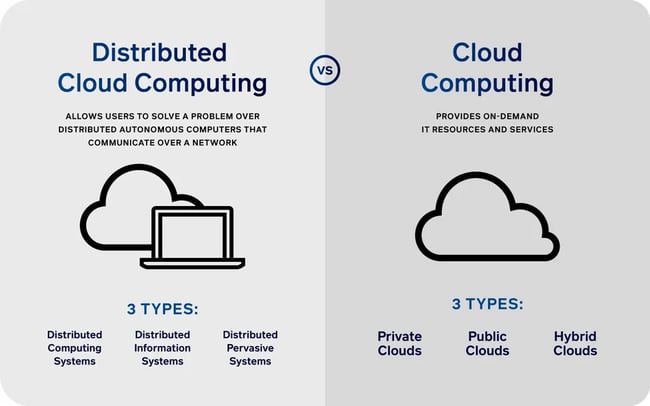
Source: Stefanini
By incorporating the physical location of cloud-delivered services, the distributed cloud moves away from a centralized approach. Distributed cloud uses the public cloud, hybrid cloud, and edge computing to deliver cloud services in different physical locations.
Through the distributed cloud, quicker deployments and updates are possible, and data storage becomes scalable while, like most top software technologies, keeping the cost-efficiency intact. The operations become physically closer to the customers, but the capabilities remain with the public cloud provider.
Summing Up
With the emergence of trending technologies, IT products and services improve the customer journey and experience. To incorporate these trending technologies in computer science, students and professionals must stay in touch with these trends to stay relevant in the job market. GreyCampus certifications leave you with this deeper and industry-accepted IT knowledge and are just a click away.
Apply today for the Data Science Course!

